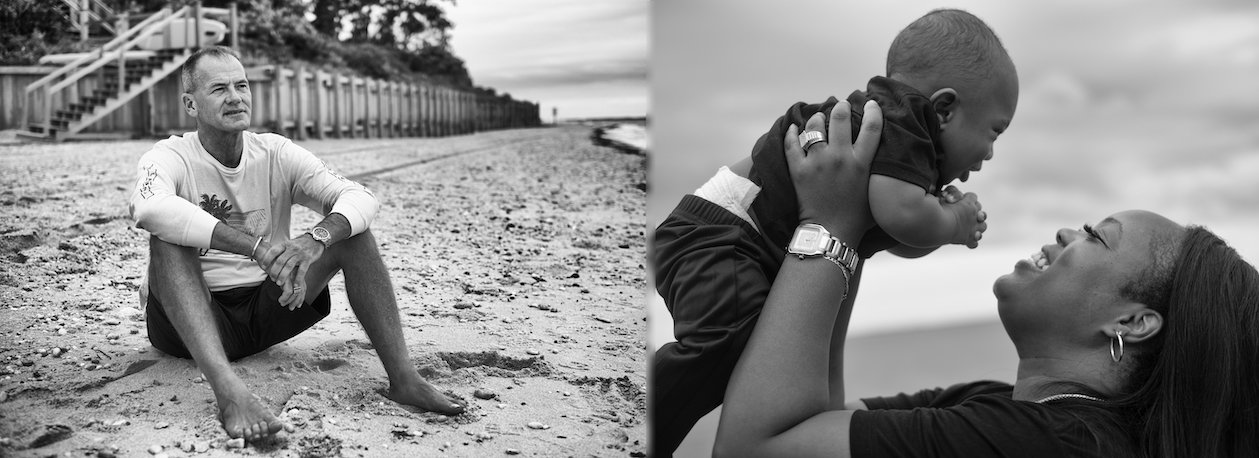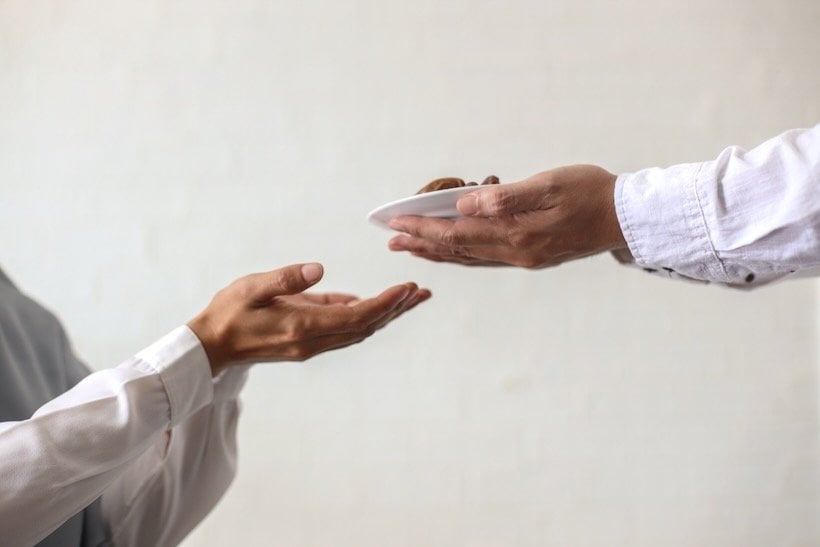At every level of the conviction process, there are opportunities for corruption and miscarriages of justice. This can happen through racial profiling, over-policing, witness coercion, prosecutorial misconduct, witness misidentification, improper forensics, junk science and unjust legal precedent—and these are just a few of the places where misconduct can occur and yield catastrophic results. The connection between wrongful convictions and larger systemic issues cannot be denied. According to the Innocence Project, 42 percent of the death row population in America is Black—despite the fact that only 13 percent of the U.S. population is Black. Additionally, people convicted of killing white people are 17 times more likely to be placed on death row than those convicted of killing Black people. These statistics make it clear that systemic bias and racism play a pervasive role within our current legal system, and as a result, many innocent people’s lives are completely upended due to primarily one factor—the color of their skin.
Kiera Newsome
Kiera Newsome was arrested in April of 2001 for a murder she could not have committed and spent 19 years in the California prison system. She attended Crenshaw SEA Charter School, a private high school that had very strict attendance policies. Students had to sign in and out each day and were required to have permission slips to leave campus; in-class attendance was taken several times throughout the day—including at lunch—and constant adult supervision was the norm. On April 16, 2001, Newsome did not miss a single attendance check-in, and her teacher testified to her presence in class all day. Despite this, she was convicted for the murder of Christian Henton, who had been shot and killed 13 miles from Newsome’s school. She was 16 years old.

Newsome’s prosecutor relied heavily on eyewitness testimony, and despite the fact that the witnesses were known gang members of the Block Crips, who admitted to being high on marijuana at the time of the shooting—one of them even identified a completely different person, not Newsome, as the shooter—she was convicted.
Five years later, after adamantly maintaining her innocence and reaching out to everyone she could for help, Newsome’s case was accepted by the California Innocence Project. However, in 2012, they hit a dead end because they didn’t have enough funding to do the outreach and legwork required to progress with her case. That is when they reached out to the Juvenile Innocence and Fair Sentencing Clinic (JIFS)—something they were able to do because Newsome was 16 at the time of her conviction. JIFS was able to work in tandem with the Innocence Project and filed a clemency petition on her behalf. Newsome was released on parole on April 7, 2020, 19 years after her conviction.
When we caught up with Newsome, we discussed how she would encourage people to get involved and help make a difference. She emphasized that organizations like the Innocence Project need serious funding—and therefore need help from anyone willing to lend a hand. “I just really want people to think about this because normally we don’t think about things unless it’s dealing with our family or our immediates,” she says. “But just picture themselves in a position that they didn’t even create to begin with, and there’s no way out. But then, there are people out there who are willing to help, but they can’t because they don’t have the finances or resources to help. I just really want them to take the time out to just picture that.”

Because she has yet to be formally exonerated, Newsome still has a record. This has prevented her from getting a decent job or living conditions because she cannot pass a background check. Flom has been instrumental in helping Newsome outmaneuver some of these barriers to reentering society and has helped her acquire residency in a safe neighborhood and a way to provide for herself and her family. Newsome is now a social worker working with children and young adults, putting the three associate degrees she earned while she was incarcerated to good use and continuing the work she started through various programs while incarcerated—helping children rewrite their future through exposure to mentorship and mental health resources. Newsome emphasized that growing up in environments as she did, in South Central LA which is overrun with gang violence, means that there are very few people to look up to as role models, and therefore, it is almost impossible to imagine creating a different kind of future for yourself. She has worked with children in the juvenile system, providing them with a safe space to talk about their experiences and mental health, hoping to guide them toward a healthier future and continues that admirable mission through her social work today.
Newsome stressed the impact of Flom’s help and guidance saying, “He raises money and spends his own money just to help people. He’s not one of those people that comes in trying to collect the story to build [himself] up and to make [himself] look big. You know, he has really dedicated his time and his energy towards helping people.” Beyond his care and attention for Newsome, Flom has even taken on a role in her 10-month-old son’s life, becoming his godfather and assuring his strong and caring mother that he is there for them for the long haul.
A strong dedication to helping people is something that Flom and Newsome share; even though she expressed that speaking about her story is difficult, Newsome emphasized that she tells it in order to bring awareness to the issue of wrongful incarceration and to stand up for other people who have experienced a similar miscarriage of justice.
John Huffington
John Huffington was wrongfully convicted of a double homicide in 1981 and spent 32 years in the Maryland Prison System, 10 of which were on death row. Huffington’s prosecutor, Joseph Cassilly, was disbarred for withholding exculpatory evidence that could have granted Huffington his freedom years earlier—something that has happened only five times in the history of the United States, according to the Innocence Project. Huffington was released in 2013 as a result of new DNA evidence that proved the hairs found at the crime scene were not, in fact, Huffington’s. Faulty DNA evidence had been submitted by the FBI, and they have since been forced to acknowledge the widespread mismanagement and faulty testimony that led to this submission.
Since his release, Huffington has become a figurehead and advocate for criminal justice reform and the reentry community. He has been recognized for his work in this space by Baltimore City leaders and is now serving as the director of business at Kinetic Capital and vice president of the Kinetic Capital Community Foundation.
Huffington told Worth what he feels are the most beneficial areas for people to get involved. “I look at it as a circle with three arcs built into it. And the first part of that circle, we’re really familiar with from the ‘just say no’ program and these catchphrases like ‘the school-to-prison pipeline.’ That’s the intervention stage, where you work with at-risk youth, which is another misnomer because at-risk youth are all the youth of today. I don’t care if they’re white, upper-middle class, suburban or if they are African American kids living in the projects. Every kid today is at risk. And that’s the key right there. For a polite society to think this doesn’t affect them—I call bullshit.”
“Then the second part of the arc is: Once people are incarcerated, what happens?” he continues. “So, you need to get involved in existing programs that are already within the institutions on a volunteer status, or create your own. This is crucial because there’s a choice to be made. However much time that person is going to do, is it wasted time…or is it productive time?”
The third part of the arc is what happens after someone gets out of prison, Huffington says. He is an advocate for the importance of programs assisting people with reentry, providing them with resources and skills to readapt and lower the chances of recidivism.
Huffington explains that “there are only two factors that have been proven to reduce recidivism, meaning that person is going to re-offend and come back into the system. Those two things are education and job training.” Huffington emphasizes the importance of providing people who are incarcerated with education opportunities, noting that he obtained his Bachelor of Science in management science with a concentration in economics and finance, as well as a minor in applied psychology, which would have been his second degree if he had had another year. Inmates’ access to Pell Grants was eliminated by Congress in 1995, cutting Huffington’s education short after just three years.
Ways You Can Get Involved
Worth asked Jason Flom, Jeff Kempler, Kiera Newsome and John Huffington what they think are the best ways for you to get involved in the criminal justice space and make a difference. Here are some of the ways they encourage you to start.
- Discuss these issues with your friends and family.
- Be aware of some basic statistics.
- Listen to the Wrongful Convictions and Righteous Convictions podcasts.
- Don’t try to get out of jury duty; use your voice to help ensure that justice is served.
- Vote for progressive DAs who are committed to creating new or improving existing Conviction Integrity Units (CIUs).
- Donate to the Innocence Project and other programs that provide services to the wrongfully incarcerated.
- Donate your time and money to recidivism reduction programs.
Who Is Helping?
The Innocence Project might be one of the most notable organizations working to bring about reform, but it certainly isn’t the only one. Here is a list of nonprofit organizations that are working to generate criminal justice reform and systemic change.
- The Innocence Project helps the wrongfully incarcerated become exonerated primarily through the use of advanced DNA testing that might not have been available at the time of their trial. The Innocence Project provides its clients with pro bono legal services. With a branch in almost every state, the Innocence Project works tirelessly to serve the massive amount of people who are wrongfully incarcerated and is continuously overwhelmed and underfunded.
- The Marshal Project is a nonprofit publication that seeks to raise awareness and encourage a sense of urgency surrounding the state of our criminal justice system. They are an amazing resource for learning about the criminal justice system, maintaining a dedication to truthful and grounding accounts of what is happening in our prisons.
- The Sentencing Project aims to support and protect voter eligibility and civic inclusion, end extreme sentencing in the United States, protect juveniles from the adult criminal legal system and push for alternatives to youth incarceration and invest in positive community development.
- National Institute of Criminal Justice Reform provides technical assistance, consulting, research, organizational development and advocacy in the juvenile and criminal justice space, including youth development and violence prevention. They work with a broad portfolio of organizations, including government agencies, nonprofit organizations and philanthropic foundations.
- Stand Together works with thousands of organizations to apply a “bottom-up” approach, empowering them to create systemic and cultural change.
- The Sunny Center is located in Tampa, Floria, and provides four exonerees at a time with housing and support following their release from prison. The Sunny Center was founded by Sunny Jacobs and Peter Pringle, who were both wrongfully convicted and sentenced to death. Sunny spent 17 years in the Florida State Prison system before being released in 1992, and Peter spent 15 years in prison in Ireland before being released in 1995. They married in 1998 and have since been helping other exonerees find a way to heal through the same practices that helped them while incarcerated—yoga, meditation and prayer. Jason Flom provided most of the funding needed to help start this foundation.
- Families Against Mandatory Minimums is an organization that seeks to generate a sense of urgency around criminal justice reform and represent the stories of those who have been mistreated by our legal system. Through public education and targeting advocacy—which includes placing pressure on elected officials—FAMM is working to address unjust sentencing and prison policies.
There are many factors that contribute to the number of wrongful incarcerations that occur in the United States, and the breadth of this issue can render it a daunting one to confront. However, by learning more about everything that goes into these miscarriages of justice, it becomes more and more apparent that we have to take action. There are many ways to get involved and help prevent innocent people from being locked away for a crime they didn’t commit. Start by talking. Talk to your friends and family about what is really going on, and the reasons for it. By being aware, and encouraging others to learn as well, you can do your part to make a meaningful change. You can get more involved by volunteering, donating, advocating or even just sharing a post on social media. But first—talk. And understand what supporting justice rather than conviction could do for a whole community of people who have been wronged by our justice system.
Missed part one of this series? You can check it out here.







